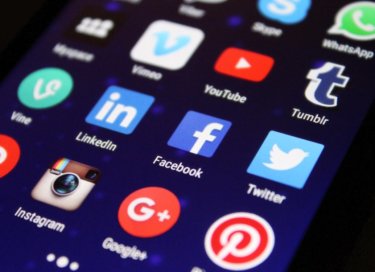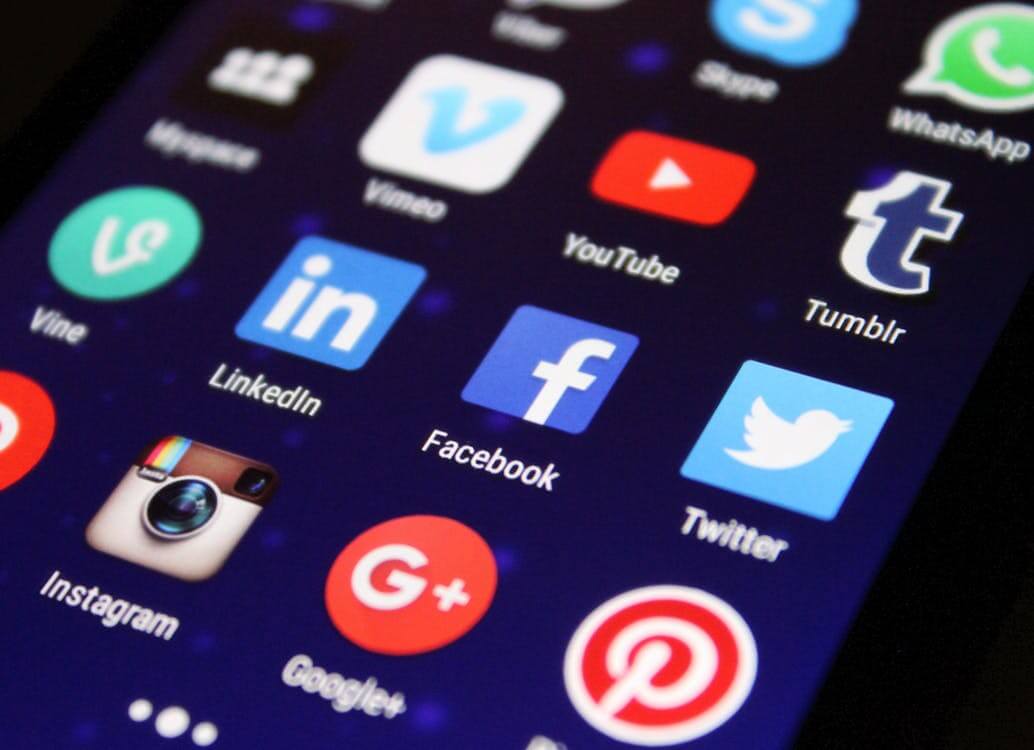By Deepak Santhiraj, MSW Licensed Clinical Social Worker
The Effect of Technology on Adolescents
In viewing the contemporary youth outlook in America, unique challenges kids face on a daily basis are apparent: conflicts with peers and parents combine with daily pressures to form a ceaseless helping of stress. Developmental and contextual factors collide, as well. Various social psychologists currently believe that the “adulting self” is an evolving experience in relation to each new moment of experience. Former memories and encounters with the past add a rich and experiential context to empowering the self’s understanding of what is currently occurring now.
These days, adolescents are required to navigate their own personal process of individuating into the young adult version of themselves. There is a dynamic connection that forms with academic standards of achievement, social learning and the practical steps toward adulthood. Author, professor, speaker and generations researcher, Dr. Jean Twenge, adds insight into the current reflection of America’s youth outlook in her work. You can find Dr. Jean Twenge and her reflection on current trends with adolescents and electronics here.
While they’re fluent in all things digital, teenagers (who are more connected than anyone) now experience greater levels of loneliness than ever before. Social media pundits are naming this phenomenon as “Facebook depression,” in which teenagers feel alienated. This then prompts them to turn to the online world for connection, but this ultimately enlarges their subjective feelings of loneliness and disconnection from the real world. Studies demonstrate that teenagers who felt alienated and used the internet  to connect with other virtual friends ended up feeling lonelier and more disconnected than before, despite their search for social connection and acceptance.
to connect with other virtual friends ended up feeling lonelier and more disconnected than before, despite their search for social connection and acceptance.
There is a rewards cycle that consistently occurs: Screens provide a steady rush and release of the neurotransmitter dopamine. With this rewards cycle in mind, kids look to electronics and digital media for social connection, companionship and acceptance as a means to consistently experience neurochemical rewards and escape those subjective feelings of loneliness and disconnection. You can view the paradoxical reality of social media as the “innovation of loneliness” here.
Here are simple and accessible tactics for promoting healthy and meaningful connection for our youth. We need to be more responsive, timely and urgent in how we navigating these trends, and this list will help.
- Minimize screen time and enjoy the outdoors as a family. Going outdoors can minimize electronic pleasures and empower the brain toward a general positive mood. As parents, look past the collision between social media and early adolescence and pursue outdoor activities as a way to establish re-connection and emotional intimacy within the family. Reinforce the notion that, as a family, you can put down the phone and still have meaning and purpose.
- No one should sleep within 10 feet of a smart phone. The blue light that the smart phone emits is equivalent to our brains interpreting it as sunlight, and will keep us awake and disrupt quality cycles of sleep, reducing the sleep hormone melatonin, and making it harder for us to sleep. Buy an inexpensive alarm, put the phone away from your bedroom environment and avoid the wake-inducing light and stimulating material that are seen to disrupt the quality of sleep.
- Create opportunities for face-to-face dialogue. Developmental Psychologist Susan Pinker highlights that societies that integrate more face-to-face dialogue actually experience a higher quality of life. Additional reflections from Susan Pinker on the social landscape of the nation can be viewed here. Recent studies show that teens and young adults who spend more time in person with friends and family are noted to be happier, less lonely and less depressed overall in contrast to those that spend more time on social media.
- Promote healthy behavioral changes with electronics. More recent neuroscience studies are identifying that the premier way to battle excessive screen time for youth will be to implement activities that release dopamine. Physical exercise, meditation, dancing, a cold shower and listening to music all contribute to the brain’s pleasure center activity being turned on. If your child has a smartphone, you as the parent can get specific apps that limit time spent on certain sites, lock the phone after a certain amount of time or allow you to see if your child is being a responsible user. It can be better to install controls and limits first, before giving your child access to a smartphone, such that your child does not use the smart phone as the central focus.
- Use a 5-minute rule for distraction. The human brain is known to not attend, remain focused or be present when there are multiple cognitive tasks that are presented and require our conscious attention at the same time. Whether for studying, reading or for other related content, remain focused on the task for 20 to 45 minutes until you are fatigued or need to re-focus. Then spend 5 minutes on social media before returning to your task. During work or study, putting the phone away can enable greater focus on the task at hand and minimize distraction. Set an example for your child by using the phone in moderation.
In-person over on-screen
As parents, it’s vital to find a place of moderation with how much you allow your family members to have a phone in their hands, how much time their eyes are on a screen and how many instances they communicate digitally instead of face-to-face. Let us not allow technology to be a substitute for the life that we desire. Instead, let us pursue a lifestyle that honors and values live connection and face-to-face interaction.
In the smartphone era, psychologist Les Greenberg explains, “The whole person self is… created by a dialectical interaction of two streams of consciousness – immediate direct experiencing and ongoing symbolizing and reflexive explaining that organizes experiences to create an enduring sense of self.” In this perspective, it is the ongoing use of smartphones that have contributed to this repetitive dance between real-life experiences and creating an ideal version of the self. Researchers note that college students are savvy with electronic devices but weaker with interpersonal skills.
From the work Generation on a Tightrope, authors Arthur Levine and Diane Dean write:
“On nearly every campus with residential housing, we were told about roommates having an argument facing back-to-back in the same room, not speaking, furiously texting… A number of students said they preferred to text rather than call people because they felt less vulnerable that way. This was particularly the case with matters of the heart. They feared rejection and texts were less personal. This creates an environment in which things that would best be done in person are relegated to texts and e-mails. Students are tired of getting break-up texts and messages such as “I don’t want to be friends anymore.” Almost universally, deans said the current generation of college students had weaker social skills.”
Look to Denmark
The research studies on the current decline of psychological well-being, linked with the digital age of social media, are alarming. We must explore ideas and strategies to better navigate these rough digital waters. To start, let’s look across the Atlantic at Denmark.
The Danes are routinely named as one of the world’s happiest people, according to the World Happiness Report. Added in June 2017 to the Oxford Dictionary, the Danish social construct, hygge, translates to “cozy” and represents the idea of “intentional intimacy” in which safe, balanced, and harmonious experiences are cultivated in multiple environments. As a visual representation, enjoying a warm drink at the local park with friends, having a dinner outing with loved ones or being in an atmosphere of easy-going fun with other family members all describe hyggelige experiences that foster trust and promote overall life satisfaction and well-being.
Denmark, while small in terms of square footage, has had a massive global impact in recent years. Current trends include Amazon selling more than 900 books on hygge, Instagram having over 3 million posts on #hygge and Google searches having jumped significantly with the global search on the term hygge since October 2016. As a certain quality of social life, the Danish cultural meaning of hygge and its implications are vast and broad-reaching for our nation.
In my perspective, cultivating more hyggelige experiences for our youth will untangle teens and young adults from the digital snares that have contributed to the psychological decline of an entire generation.
Recommended Resources:
Irresistible: The Rise of Addictive Technology and the Business of Keeping Us Hooked by Adam Alter
Generation on a Tightrope: A Portrait of Today’s College Student by Arthur Levine and Diane Dean
Screenwise: Helping Kids Thrive (and Survive) in Their Digital World by Devorah Heitner
The Art of Screen Time: How Your Family Can Balance Digital Media and Real Life by Anya Kamenetz
Glow Kids: How Screen Addiction Is Hijacking Our Kids – and How to Break the Trance by Nicholas Kardaras
The Village Effect by Susan Pinker
How to Break Up With Your Phone: The 30-Day Plan to take back your life by Catherine Price
Bowling Alone: The Collapse and Revival of American Community by Robert D. Putnam
iGen: Why Today’s Super-Connected Kids Are Growing Up Less Rebellious, More Tolerant, Less Happy–and Completely Unprepared for Adulthood–and What That Means for the Rest of Us and Generation Me both by Jean Twenge


